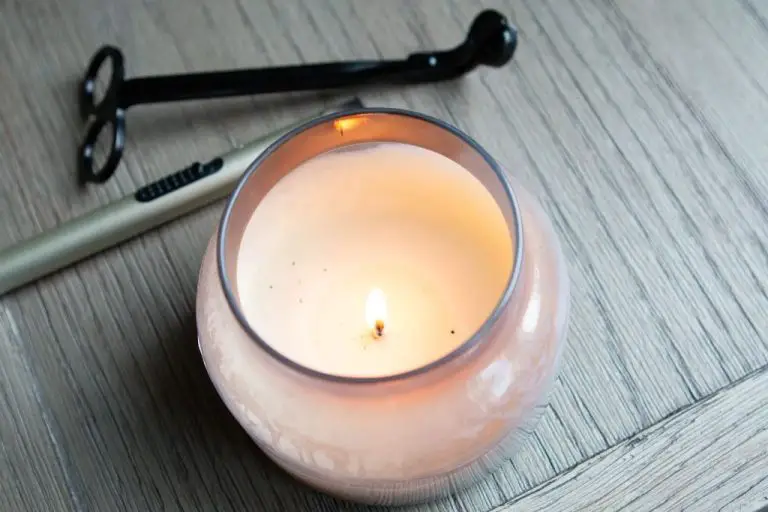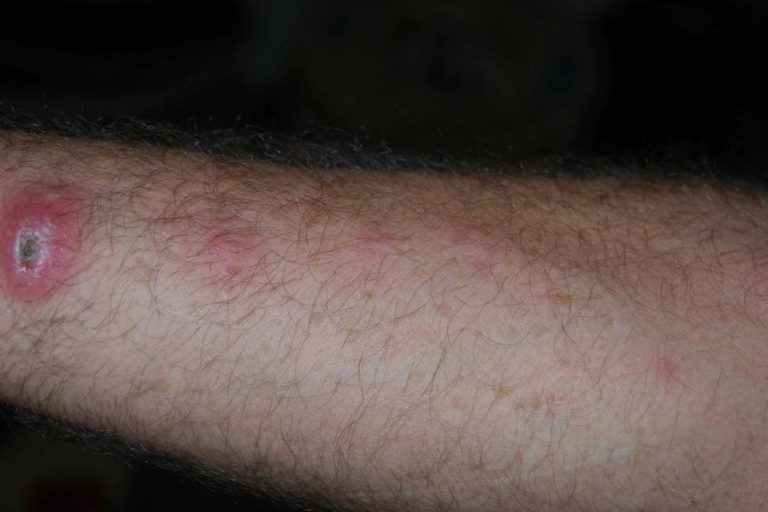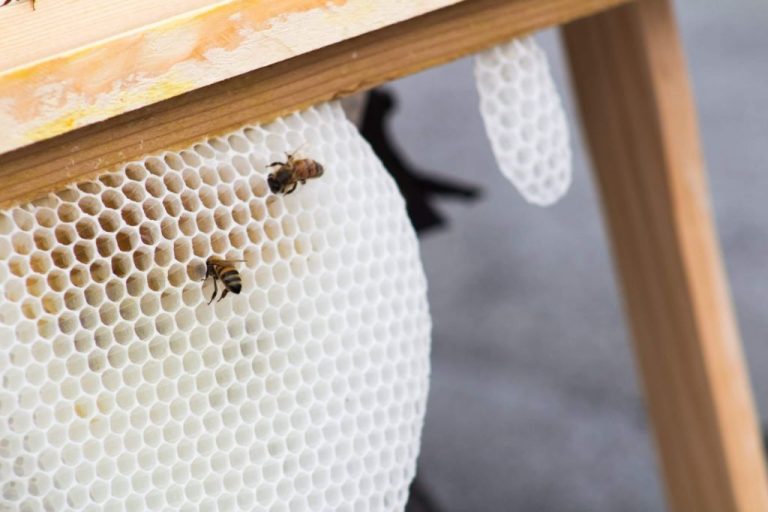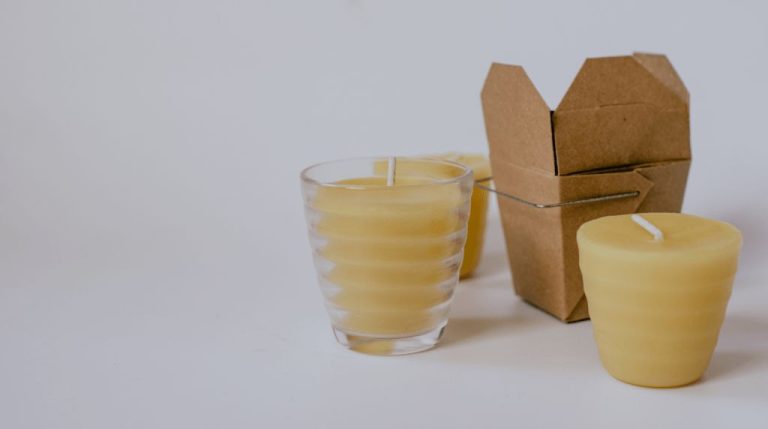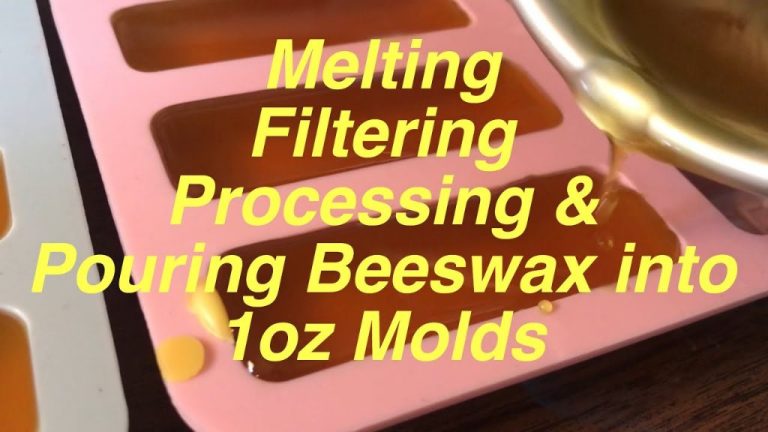Is Beeswax Good For Candle Making?
Candle making is an ancient craft that has been used for centuries to bring light and ambiance to homes and sacred spaces. While early candles were made from tallow or other animal fats, the introduction of beeswax candles marked a major advancement in candle making. Beeswax candles burn brighter, cleaner, and longer than other types of candles. Today, many candle makers and enthusiasts prefer using beeswax over paraffin and other waxes. The natural honey scent, pure burn, and versatility of beeswax has kept it a favorite for candle making throughout history.
This article will explore the pros and cons of using beeswax for candle making. We’ll cover how beeswax candles differ from paraffin candles in burn time, brightness, scent, and more. You’ll learn the basics of making beeswax candles at home, from preparing the wax to adding scents and colors. We’ll also discuss factors to consider when buying pre-made beeswax candles. By the end, you’ll understand why beeswax remains a top choice for candle making even today.
What is Beeswax?
Beeswax is a natural wax produced by honey bees of the genus Apis (1). It is secreted from eight wax-producing glands on the worker bee’s abdomen and is used by bees to build the walls of the honeycomb in their beehive (2).
Beeswax starts off as transparent scales, which are chewed and molded by worker bees to build the honeycomb. As the wax ages, it develops a yellow to brown color from pigments introduced by the bees (2).
Chemically, beeswax consists of esters of fatty acids and various long-chain alcohols. The main components are palmitate, palmitoleate, hydroxypalmitate and oleate esters of long-chain (30-32 carbons) aliphatic alcohols, with the ratio of triacontanyl palmitate CH3(CH2)29O-CO-(CH2)14CH3 to cerotic acid CH3(CH2)24CH2OH determining the hardness of the wax (1).
Beeswax has a high melting point range of 62 to 64°C and a low freezing point range of 61 to 63°C. It is malleable when warm and hard when cold (3). It has a sweet, honey-like scent (2).
Overall, beeswax is a natural wax with unique chemical properties that make it suitable for a variety of applications, which will be explored throughout this article.
Pros of Using Beeswax for Candles
Beeswax is a natural wax produced by honey bees. Since it comes directly from nature, beeswax has many advantages over synthetic waxes like paraffin for candle making. Here are some of the top benefits of using beeswax candles:
Beeswax is completely natural and renewable. Bees produce wax to build the honeycomb cells where they store honey and pollen. Beekeepers simply collect excess wax cappings after honey is harvested. No chemicals are used in processing the wax. Since bees are constantly making new wax, beeswax is a renewable resource.
Beeswax candles are biodegradable and non-toxic. 100% beeswax candles can biodegrade back into the soil. They don’t release any toxic fumes or smoke when burning. Beeswax candles are safe to burn indoors since they don’t emit potentially harmful volatile organic compounds like paraffin candles.
The natural honey scent of beeswax is pleasing. Beeswax candles have a warm, sweet scent from honey and flower nectar. No artificial fragrances are added. The aroma from beeswax candles is subtle and enjoyable.
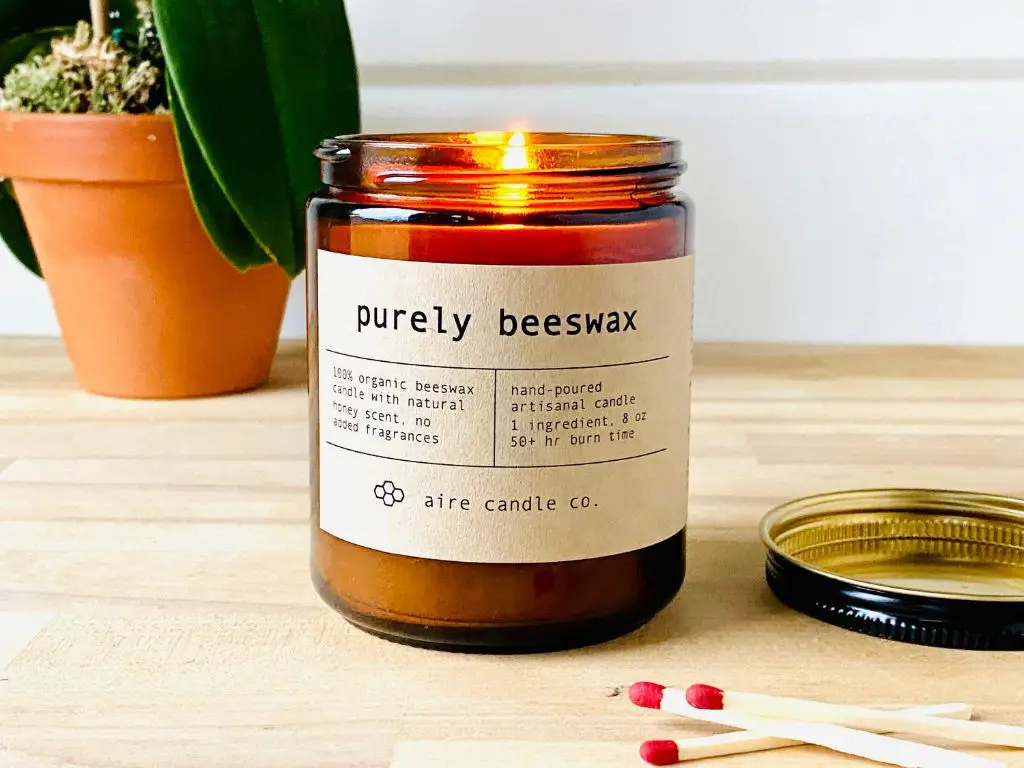
Beeswax is sustainable. Supporting beeswax helps honey bee farmers earn additional income from their hives. Using beeswax candles aids in preserving the biodiversity honey bees provide through crop pollination.
Cons of Using Beeswax for Candles
Beeswax candles have a few drawbacks that some candle makers may find prohibitive. Here are some of the main cons of using beeswax for candle making:
Beeswax is expensive. The cost of beeswax can be prohibitive, especially for small or hobby candle makers. Beeswax prices fluctuate but generally range from $5-15 per pound, significantly higher than paraffin wax which costs around $1-2 per pound (source). The high cost is due to the labor-intensive process of collecting beeswax.
Beeswax candle making is labor intensive. Producing beeswax requires a lot of time and effort from beekeepers to maintain hives, harvest beeswax, clean/filter the wax, etc. This hands-on process makes pure beeswax more costly than mass-produced paraffin wax.
Beeswax can be messy to work with. It has a low melting point of 140-150°F, so beeswax can get gummy, sticky, and soft in warm environments. Proper preparation and handling is required when pouring and molding beeswax candles.
There are also some drawbacks when burning beeswax candles. The wax can flare up or smoke more than paraffin. The scent throw may not be as strong. There are fewer coloring options since dyes don’t absorb well into beeswax.
Overall, beeswax candles require more effort and cost to make. But many candle makers feel the benefits of all-natural beeswax outweigh the cons.
How Beeswax Candles Burn
Beeswax candles burn differently than paraffin wax candles. The beeswax has a lower melting point which creates a cooler flame when burning. The cooler flame means the candle burns slower and the wax pool melts slower as well. This slower burn time allows the candle to burn cleanly and prevents excess sooting on the glass or walls. According to BeeHiveCandles.com, a beeswax candle should ideally be left to burn entirely during one session to help achieve its maximum burn time.
The slower burn also means you don’t have to trim the wick as often. Paraffin candles tend to get sooty wicks more quickly, but the cooler burn of beeswax keeps the wicks from clogging up with soot as fast. Properly burning a beeswax candle helps release the natural honey-like beeswax aroma too. The slower burn paired with the lower melting point makes beeswax an excellent choice if you want clean burning, longer lasting candles.
Beeswax vs. Paraffin Candles
When comparing beeswax to paraffin wax for candle making, there are several key differences to consider in terms of pros, cons, burn time, and environmental impact.
Some of the notable benefits of beeswax candles compared to paraffin include:
- Beeswax candles burn brighter and more cleanly, producing little to no smoke or petroleum odor (https://beeswaxco.com/beeswax-candles/benefits-beeswax-candles-vs-paraffin/). The light is often described as similar to sunlight.
- Beeswax is non-toxic and considered a clean burning wax. Paraffin can release carcinogens and black soot when burned (https://www.beehivecandles.com/help/beeswax-vs-paraffin/).
- Beeswax is a natural wax that comes from honeybees. Paraffin is a petroleum byproduct.
- Beeswax candles are biodegradable and reusable. Paraffin can take thousands of years to break down.
However, paraffin candles do have some advantages compared to beeswax:
- Paraffin wax is typically cheaper than beeswax.
- Paraffin candles can burn longer than beeswax.
- The production process of paraffin is more efficient compared to harvesting beeswax.
When burning, beeswax candles tend to burn slower and have a lower melting point than paraffin. But beeswax also burns cleaner and brighter. Paraffin can release toxins, residue, and soot.
Overall, beeswax is considered the more environmentally friendly and non-toxic option between the two waxes. But paraffin remains popular due to its low cost and efficient production. Many candle makers opt to use a blend of beeswax and paraffin to balance benefits. But those focused on natural, clean burning candles tend to favor beeswax.
Blending Beeswax with Other Waxes
Blending beeswax with other waxes can allow candle makers to achieve specific properties that may not be possible with beeswax alone. Beeswax is commonly blended with soy, palm, paraffin, and other waxes. This can help modify the burn rate, scent throw, texture, color, and more.
One popular blend is mixing beeswax with soy wax. Studies have found that adding 10-30% beeswax to soy wax can increase fragrance retention and allow the soy wax to hold more fragrance oil. The beeswax helps make the wax harder while retaining the clean burn of soy. Blends with 20-50% beeswax have been found to have excellent scent throw.
Palm wax is another common blend with beeswax. Palm wax offers excellent scent throw but can be soft. Adding beeswax adds hardness to palm wax while maintaining a smooth appearance. Blends of 25-50% beeswax work well with palm wax.
In general, adding beeswax to other waxes allows makers to create customized blends with specific properties. It helps make softer waxes harder while retaining desired qualities like scent throw. The optimal blend percentage depends on the properties you want to achieve.
Making Beeswax Candles
Beeswax candles are relatively easy to make at home with just a few basic supplies. The basic steps for DIY beeswax candle making are:
1. Prepare your beeswax. You can use beeswax sheets, chunks, or pellets. Break up or cut the wax into small pieces so it melts faster.
2. Add a double boiler. Place the beeswax in a heat safe container, then put that container in a pot with 1-2 inches of simmering water. This will gently melt the beeswax.1
3. Mix in essential oils or fragrance (optional). Let the wax fully melt first before mixing in any scents at about 1⁄2 tsp per pound of wax. Stir well to fully incorporate.
4. Prepare wick and pour wax. Thread your wick through the jar or container and secure it. Carefully pour the melted wax into the container, leaving a wax-free space at the top for the wick.
5. Cool and cure the candle. Let candles sit for at least 24 hours to fully set up before burning. This helps prevent issues like tunneling.
With just these basic supplies and steps, you can easily make customized, all-natural beeswax candles at home. Experiment with different scents, colors, and jar shapes to create beautiful handmade candles.
Buying Beeswax Candles
When purchasing beeswax candles, there are a few key things to look out for to ensure you are getting a high-quality product:
100% Beeswax: Make sure the candles are made from 100% pure beeswax and don’t contain any paraffin or other waxes. Some manufacturers blend beeswax with paraffin, which reduces the natural benefits of beeswax candles (https://www.beehivecandles.com/).
Natural Wicks: Beeswax candles should have natural fiber wicks, usually made from cotton or paper. These burn cleaner than artificial wicks. Avoid candles with metal-core wicks (https://registerfamilyfarm.com/collections/beeswax-candles).
Color and Scent: Look for beeswax candles in their natural light yellow color without dyes or pigments added. Go for minimal or light scents from essential oils rather than strong synthetic fragrances.
Handmade Quality: Well-made handcrafted beeswax candles have a slightly imperfect homemade look and feel. Machine-made candles often look too uniform. Support local artisans and small businesses when you can.
Burn Time: Beeswax candles typically burn longer than paraffin candles, up to 1 hour per inch of width (https://www.amesfarm.com/collections/pure-beeswax-candles). Make sure the burn time matches the size and shape of the candle.
Checking for these qualities will help you select high-quality handmade beeswax candles that provide all the benefits of pure beeswax.
Conclusion
In summary, beeswax is an excellent material for candle making. Its natural properties provide many benefits over paraffin wax candles.
The key advantages of beeswax candles include:
- Beeswax is completely natural, non-toxic, and environmentally friendly.
- It has a lovely natural honey aroma when burning.
- Beeswax candles burn brighter and longer than paraffin.
- The wax is hard and makes sturdy candle shapes that hold up well.
- Beeswax is fairly easy to work with compared to other natural waxes.
- It has a low melting point and blends well with other waxes.
- Beeswax gives a warm ambiance perfect for relaxing.
With benefits like these, it’s clear why beeswax has been used in candle making for centuries. The rich, golden glow of beeswax candles creates an unbeatable natural ambiance. Making your own beeswax candles can be a fun and fulfilling hobby. With just a bit of practice, you’ll be an expert at crafting beautiful handmade candles from this exceptional natural wax.

